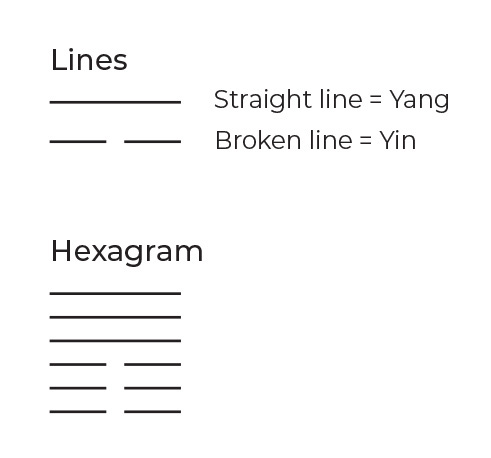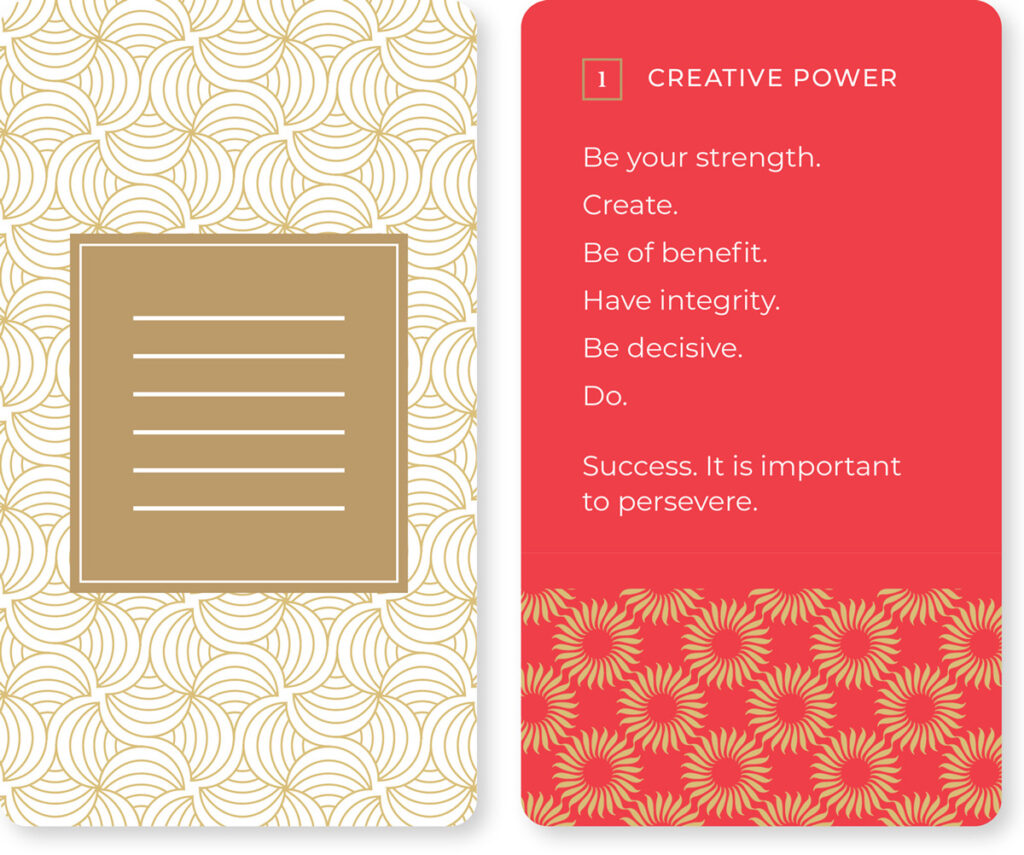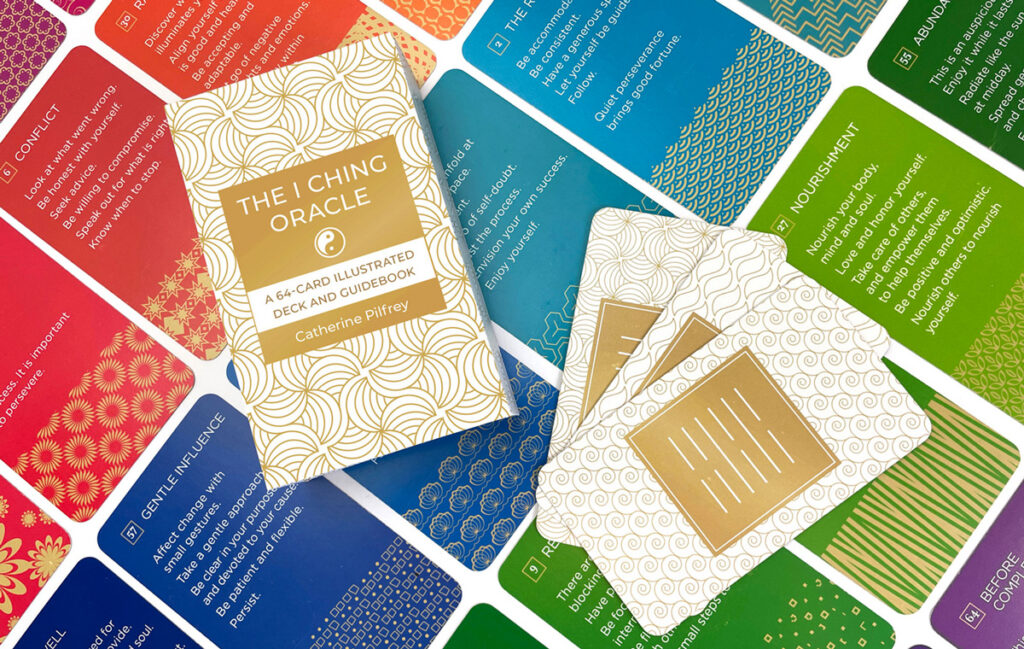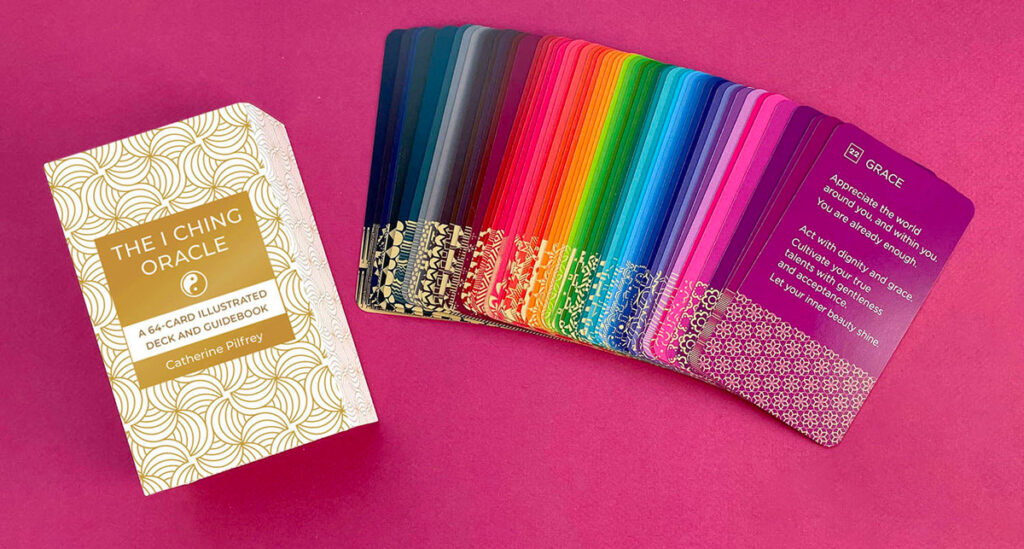
Estimated reading time: 7 minutes
The ancient teachings of the I Ching can help you access your inner wisdom, thrive in the face of change, and make decisions with confidence
—
Change is one of the most challenging aspects of life — whether it’s moving, losing a job, ending a relationship, coping with illness, or facing the loss of a loved one. Most of us have a really hard time with it.
It is understandable to find change stressful since we have an evolutionary bias to resist change and the potential danger associated with it, but there is a powerful tool that can be helpful in managing uncertainty — The I Ching, or the Book of Changes. Rooted in ancient Taoist principles, the I Ching offers not only guidance in handling change but also shows us how to thrive in the face of it.
What is the I Ching?
The I Ching (pronounced “E-Ching”), or the Book of Changes, is an ancient treasure—a book of wisdom and guidance on how to live life fully and nobly, while managing the constant change of life’s ups and downs.
Developed more than three thousand years ago, the I Ching has its roots in Confucian and Taoist philosophy and is the basis for Chinese medicine and feng shui. It explores the fundamental question of how to understand the laws of change and live in harmony with them instead of fighting against them.
The I Ching is a guide to access your inner wisdom, ancestral knowledge and universal truths, when you have questions about what do in your life. It answers the question of how to be your best self in any given situation. How do you stay calm and focused even when things are falling apart around you? How do you handle a tough conversation with your partner? How do you find a career that is fulfilling?
Having Faith in the Power of Change
The central theme of the I Ching is that things are constantly changing. As the Buddhist teachings on impermanence state, we cannot escape the fact that things are always in flux. Just as there is birth, new beginnings, and growth, there is also sickness, and eventually decay and death. Things go well, and then they don’t. This applies to our personal lives, as well as our communities, our countries, and even the planet. Nothing is exempt.
But there is no need to be overwhelmed by change. Just as good times come to an end, so do challenging times.
The I Ching instructs us to come to terms with the truth of change — to have faith when times are difficult and to be generous when things are going well. It teaches us to become more comfortable with uncertainty by providing the guidance to move forward when we are feeling paralyzed with indecision or fear.
We can also learn to be more flexible and adaptable. Through the I Ching, we see that true happiness is not based on external factors. It is dependent on our mindset, our understanding of impermanence and having an open heart. This will enable us to experience joy even when things seem to be falling apart. We learn that we can always be hopeful when we understand the laws of change.
How I Got Started in the I Ching
I was first introduced to the I Ching by a friend when I was at art college in Toronto. He consulted it regularly when he had questions about how to work through issues in his life. I found it intriguing but also a little cryptic.
But then…
A year later my boyfriend came back from an extended work trip and told me that he had fallen in love with another woman. He still loved me, but now he also loved her. I was not prepared to break up, so I became embroiled in this terrible limbo of his indecision until it finally occurred to me to consult the I Ching. Using the coin method (read on to understand), I got Hexagram 23 (Splitting Apart). I was horrified. This was not the answer I wanted to hear, so I threw the coins again. I received Splitting Apart again.
Wow, that got my attention! I knew this was the right thing to do; I had just been too afraid to face it. So, I took the instructions to heart. I found a new apartment and moved out.
That began my deep connection to the wisdom of the I Ching, the wisdom of the ancients, but also my inner wisdom that emerges in the process. Since that fateful day I have consulted the I Ching regularly for guidance on issues — big or small — that arise in my life.
How the I Ching Works
The I Ching is based on sixty-four hexagrams made up of a combination of six straight and broken lines stacked on top of each other in various combinations from bottom to top. The lines are based on the principles of yin and yang—the opposing forces in nature of negative and positive, dark and light, night and day, passive and active, respectively. Broken lines are yin, and straight lines are yang. The sixty-four hexagrams comprise all the possible combinations of yin and yang and encompass all of life’s experiences.

To consult the I Ching you start by forming a question, then throwing coins, sticks, or drawing cards to determine the lines of the hexagram. The resulting hexagram provides guidance on the situation and reveals the truth that may already be present in your unconscious mind. You then contemplate the answer so you can adopt the wisdom of the I Ching in your everyday life.
The I Ching Oracle Card Deck
During the pandemic, I saw a friend, who is an acupuncturist, who uses oracle cards in her healing practice. It occurred to me that it would be great to have an I Ching card deck to be able to consult in the same way.
Traditionally, consulting the I Ching was a complicated and time-consuming process that involved throwing coins or yarrow sticks and referring to a book that contained antiquated and often-opaque language.
Since historically it didn’t really matter what method you used, I wanted to simplify the approach. Just pull a card and quickly receive an answer. No coins to throw. No difficult translations to navigate. That way everyone can benefit from these amazing teachings.
I started looking for an I Ching card deck but found just a few that didn’t inspire me. Then by chance I came across a couple of illustrator/designers who had designed their own Tarot card decks and launched successful Kickstarter fundraising campaigns to get them printed and eventually published. As a graphic artist myself, I realized that my pattern designs would be a perfect way to illustrate the energy of each hexagram card. And that got me on my way to creating, designing and writing.
It was so much fun bringing together my skills as a designer, along with my many years of practicing and teaching meditation, with my love of the I Ching. Over the course of six months, I designed all the patterns, created the deck and wrote the copy and the accompanying booklet. I am excited to share that they are being published by Shambhala Publications in December and are ready for pre-order.
I was inspired to create The I Ching Oracle card deck to make the profound and practical guidance of the I Ching more accessible to people all over the world. In this time of increased anxiety and self-doubt, the transformative wisdom of the I Ching can help you to access your intuitive voice, to find reassurance in turbulent times and to be guided on your best path forward.



You may also enjoy reading Stories In Motion: Oracles for the Modern Seeker, by Colette Baron-Reid.